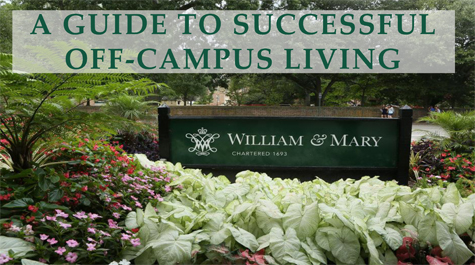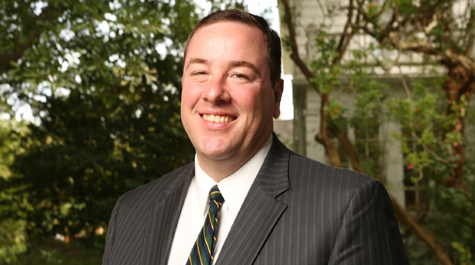One Tribe, many neighbors
There’s more to living off-campus at William & Mary than finding a house or apartment and going to class.
The university’s Division of Student Affairs and Neighborhood Relations Committee collaborated to produce a PDF, “A Guide to Successful Off-Campus Living,” to help such students better understand the myriad nuances that they could encounter living on their own.
It’s not the first time the university has offered off-campus students guidance and advice. Several years ago, Student Assembly leaders, with support from Student Affairs, conducted information sessions in the spring for students who were considering living off-campus the following year.
However, it is the first time that information has been disseminated to all off-campus students. On August 31, nearly 4,800 recently received a comprehensive email divided into three sections.
The first covered students’ rights as tenants.
“Often students sign leases without fully considering clauses like responsibility for maintenance and other potentially costly aspects,” said Jeremy Martin, associate provost and assistant to President Taylor Reveley.
In addition, Martin said, the university wanted to highlight a couple of websites that could be of use to students: www.wmoffcampus.com and www.whoseyourlandlord.com.
“That will allow students to better evaluate potential landlords, ultimately using their collective economic power as renters to hopefully ensure other student renters have a positive relationship with an effective landlord,” Martin said.
The second referenced the responsibilities students face living in a neighborhood.
“Often, our students are living independently for the first time, so they may not have thought of things like trash pickup or the lifestyle differences of folks within the same neighborhood,” Martin said. “We wanted them to know some basic aspects of being a good neighbor from the moment they move into a new community.”
The final section covered resources available to students in greater Williamsburg.
“From public safety to public transportation, it’s helpful to know what’s out there,” Martin said.
Jim Joseph, chairperson of the Neighborhood Council of Williamsburg, wrote to members of the council that the guide was “just one part of the activity William & Mary is conducting to create a better atmosphere between the people who live in the city and the students who choose to rent in the city."
There are other steps the university has taken since 2009, when it co-founded the Neighborhood Relations Committee to encourage positive interaction between students, landlords and the city’s residential community.
Among them is student representation at the monthly Neighborhood Council of Williamsburg meetings. Another is participation in neighborhood picnics so that new neighbors can get to know each other. Martin said that a similar event is planned for the new Richmond Hall area in the near future.
 Skip to main content
Skip to main content


